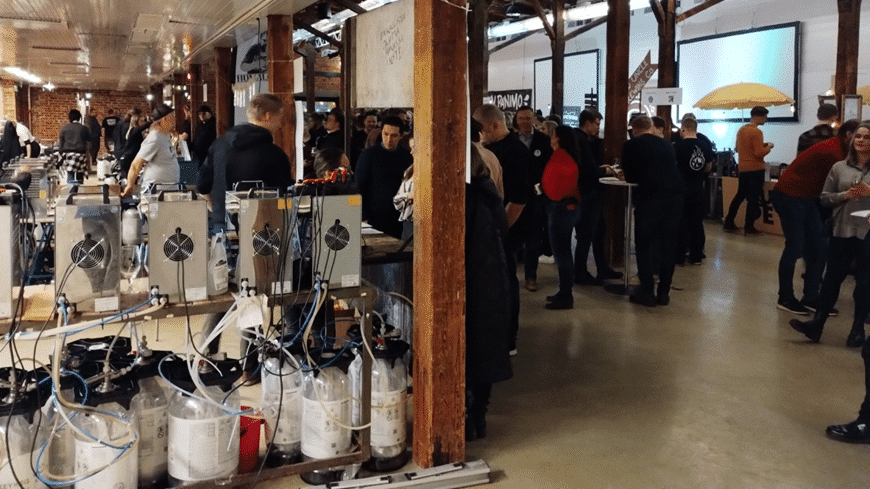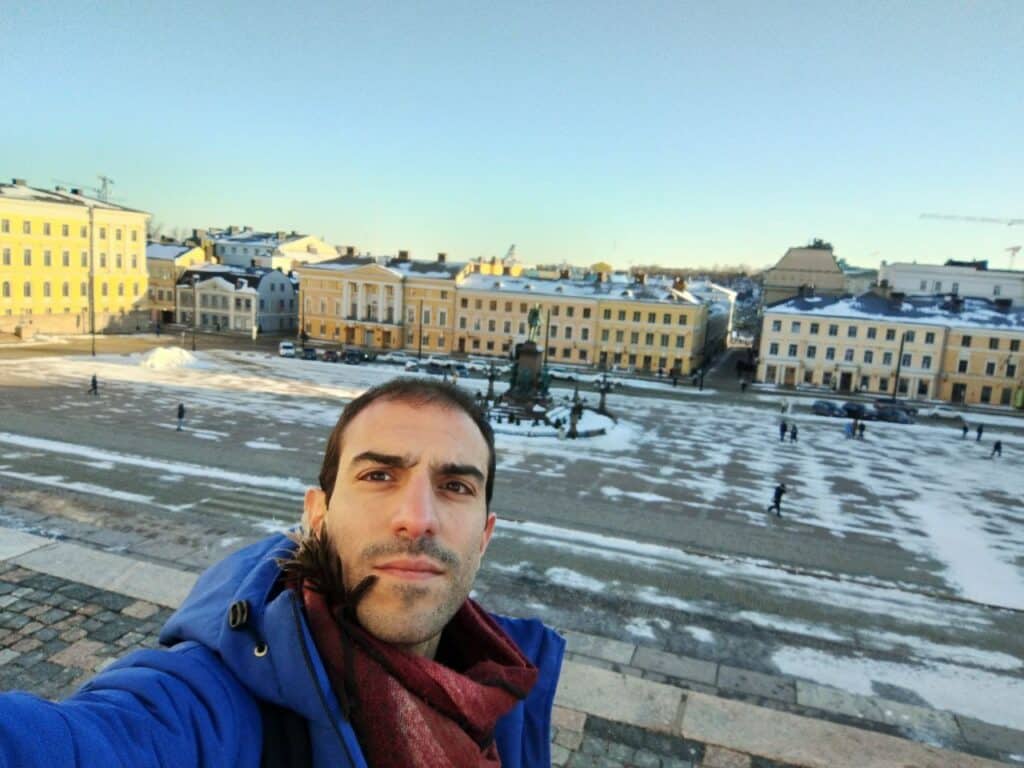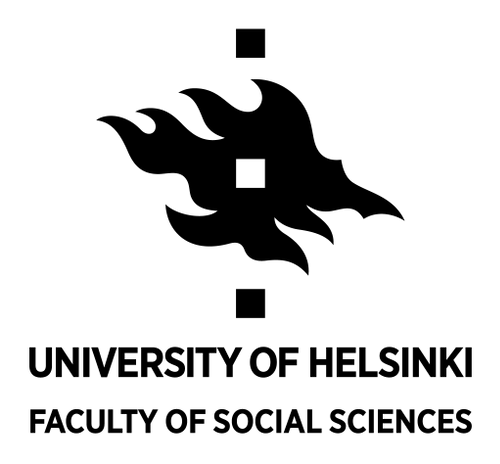By Santiago Kaderian
My experience in Helsinki was really fruitful and I am very grateful to the CSSM group and its project, funders and the Faculty of Social Sciences of Helsinki University. This three month stay was my first trip to Europe and to this special country and particular city. I cannot say I knew nothing about Finland, many years before I’ve watched movies like Kaurismäki ones, TV series (Karppi, Sorjonen), a documentary about Onkalo (Into the Eternity), listened to music (Sonata Artica, Nightwish) and more recently some search about science and technology in Finland. But nothing equals real experience. At arrival, from March to the beginning of June, I was able to observe the change from winter to spring. I went from 35°C in Buenos Aires in summer to -15°C in Helsinki in winter, the last strong blow of winter in early March. A doctoral fellow of the Global Development area told me a month later: “Helsinki doesn’t have proper winters anymore”. May be a mix of urban development, climate change and personal feelings. The travel wasn’t made without personal effort, first because of distance and time required, second because after my PhD fellowship I couldn’t get a Postdoctoral Fellowship from Argentina (now I have it) and I didn’t have funding, so I rely almost only on the funding of CSSM and small support for domestic flights to the Argentinean international airport provided by the University of Buenos Aires UBACYT project.
My first impression of the Faculty of Social Sciences of the University of Helsinki was of a very modern building in the middle of the historical and touristic center of Helsinki. According to its website it was built in the 1960s for the disciplines of radiochemistry and biochemistry and from the 1990s had “new occupants”: social scientists. This configuration to carry experiments in natural sciences can be seen in its “fishbowl” format with meeting rooms and kitchen in the center and offices around those central spaces. The visitors and fellows level was well equipped with monitors and keyboards for common use. I write this because infrastructure kind of saved me, because my notebook had suffered screen damage a week earlier, so that equipment was key to carry on the work.
Almost all my stay I was in and around the city center, I got to know neighborhoods from Pasila to Eira and from Kamppi to Kaisaniemi. I also visited Espoo, Vantaa, Lauttasaari and at the end of the stay I took the train to a farther town outside Helsinki. Residing for a month near the main train station (Rautatieasema) I could see that at certain times I was alone in the streets, which denotes the difference in density with a capital city like Buenos Aires. And at other times, I was surrounded by people from all over the world, some locals and some tourists visiting Helsinki. I was surprised that most of the people I interacted with in the city, beyond the university, spoke very good English. In the months I was there I learned some words in Finnish, the pronunciation of single words is not so difficult for a Spanish speaker, but to learn it is another thing. I’ve also experienced one side of the Vappu (Finnish Worker Day) the more centric, then I was told there were different points in the city bringing different social sectors. My last days were before the summer holidays period and I was told that some Finns go to their outside cottages (mökki).

In the course of the 3 months I was able to attend the Science, Technology and Society STS seminars of the Faculty, coordinated by Marianne Mäkelin and Alicia Ng (and an electronic owl). CSSM called for internal Cross-Pollination Seminars (CPS) and workshops, I highlight Aman Asif’s Spirulina workshop in the Oodi (Helsinki public library) which has a kitchen workshop and there we filtered spirulina. We reflected on how to approach the theme conceptually and practically and we cooked some green cookies with the algae. I propose a CPS I chose the topic of infrastructures in microbiology because I thought it could be useful as a boundary object for the group that was researching different topics around social studies of microbes. Also I’ve chosen that topic for a presentation in 4S Meeting 2022 (online version) where I met for first time Maya Hey virtually. It was great to meet her personally in Helsinki where she is currently a researcher at CSSM. I attended two major CSSM seminars, one was hosted locally and the other in Prague. The first was “Theory Production Seminar about microbes and social practices”, where were carried out presentations, writing activities in pairs and mutually reading and commenting. The objective was exploring and developing frameworks for microbes’ research and points of match and mismatch with social practices theories and were proposed future works and lines of inquiry. Other memorable experience was the three day long Prague workshop called “Co/Sense and Re/Create: joint inquiry into gardening microbiomes and migrating holobionts” co-organized by a group of the Institute of Sociology of the Czech Academy of Sciences with CSSM. Going to the Czech Republic was a dream that came true because my PhD thesis dealt with the beer industry and that country was and is indeed a center of brewing famous for their lager beers. After the workshop, we had the possibility to go with Will LaFleur to the Pilsner Urquell factory and visit its museum, this factory was pioneer in the well known Pilsner style beer. The workshop’s place was the Kafkárna that used to be a sculpture studio and now is part of the Academy of Arts and Architecture of Prague. Although it is in the center of the city it has a beautiful garden, perfect to carry out the activities that were done there: observation of plants, soil, insects, composting, gardening, eating, tasting and sensing fermented products, listening the stories about the food and beverages and it productive ways, watching a play, taking photos and recordings, rest after work. We produced a short audiovisual, to do that we were divided into three groups, one focused on writing, other on production of images and visuals and other on sound, at the end we mixed all.

There were also conducted Ethics meetings coordinated by Tiia Sudenkaarne, CSSM core group organizational meetings, Maya Hey’s meetings on how to publish and project writing, and the informal meetings with academics who want to discuss topics about social studies of microbes. The artistic side of the CSSM with Oona Leinovirtanen and Riina Hannula was really special because it permitted other kinds of reflections and outputs like visuals, performances and experiments. One example was the Microbial Dance exercise where some members of CSSM took part. In one exercise, we moved in pairs and collectively with some instructions related to sensing and reacting to the others and environment (light, temperature, touch). At least we were assigned some movements reminiscent of those observed and filmed through the microscope by her (walking in straight lines, crush with others, standing still and twist movements). The last week of my stay we took part in a visual performance moving in front of the projection of videos that Oona recorded through a microscope under specific conditions of sound and music and with samples delivered by members of the group.

In the particular work with CSSM I observed their interest in post-structuralist perspectives, which aligns with Science Technology and Society (STS), communication studies, sociology and anthropology perspectives that discuss the agency of organisms and non-human entities, ontologies and critic of the culture and nature dualities and methodologies of witnessing, art and performance and getting into praxis along with concepts. The members had different themes and backgrounds so that the concepts and theories referring to more-than-human, holobiont and multi-species were a meeting point. In the formal aspect, the scientific and technological projects framing all the activities had to do with health, specifically AMR, food production and fermentation, ethics and also arts and performance. In the course of my stay and attendance at the university, I had the opportunity to talk to PhD students, researchers and professors. This was very interesting, as many of their topics had to do with the urban, political and demographics of the country. That guided me a little in the new context I was intensively experimenting in those 3 months. I was also able to contact some researchers who were related to my doctoral research topics in Argentina and I could make informal interviews. It was also possible to interact with local beer producers and consumers at two festivals like Craft Beer Helsinki and Helsinki Beer Festival, this was important to make a counterpoint with my craft brewing research in my previous Master’s and Doctoral research.

To conclude, this was great holistic experience dealing with different infrastructures, languages, and people and with interesting particular academic and work experiences aligned with some of my perspectives and topics. When I came back to the South winter, I missed Helsinki for a couple of weeks, because I’ve already developed a mini-routine there. One way to stay connected was to bake ruisleipä, a kind of rye bread well distributed across the country that I get very used to while I was there.
Santiago Kaderian is a sociologist and holds a PhD in Social Sciences from the Faculty of Social Sciences at University of Buenos Aires. He stayed at the CSSM as a fellow between March and May 2023.



